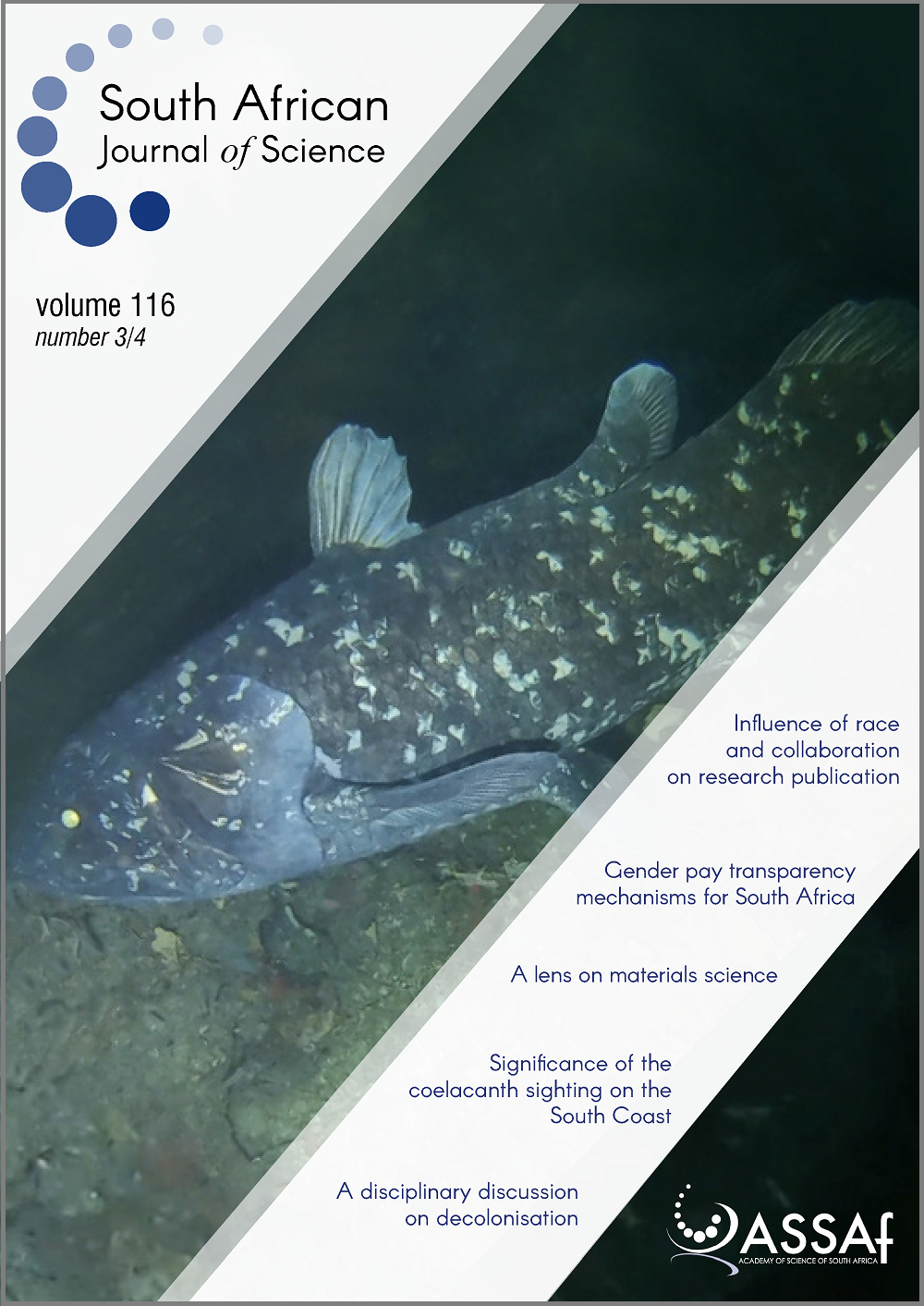Pleistocene large reptile tracks and probable swim traces on South Africa’s Cape south coast
DOI:
https://doi.org/10.17159/sajs.2020/6542Keywords:
Pleistocene reptiles, fossil tracks, swim traces, crocodylians, lithicsAbstract
The Cape south coast of South Africa contains a wealth of Pleistocene vertebrate trace fossil sites in aeolianites and cemented foreshore deposits. Published studies have described mammal and avian tracksites identified along this coastline. We report here on a number of Pleistocene palaeosurfaces within the Garden Route National Park that exhibit tracks of large reptiles, including probable swim traces. The tracks were probably made by more than one species, and may include a crocodylian. There are no extant reptiles in this coastal region capable of making such tracks and traces, which probably represent an indication of a previously more extensive range for the Nile crocodile and a monitor lizard. These findings demonstrate the potential for ichnology to complement the traditional body fossil record. Two Middle Stone Age stone artifacts were found embedded in one palaeosurface containing multiple reptile trackways. These discoveries have implications for the understanding of Pleistocene palaeoenvironment and palaeoclimate – in an area which is important in the study of modern human origins.
Significance:
- Large reptile Pleistocene fossil tracksites have recently been discovered on the Cape south coast of South Africa where there are no previous such records, and no reptiles of this size are currently found in the region.
- These sites include the first reported probable reptile swim traces in Africa and one tracksite also contained two Middle Stone Age artifacts.
- These discoveries have implications for Pleistocene environments and climate on the Cape south coast.
Published
Issue
Section
License

All articles are published under a Creative Commons Attribution 4.0 International Licence
Copyright is retained by the authors. Readers are welcome to reproduce, share and adapt the content without permission provided the source is attributed.
Disclaimer: The publisher and editors accept no responsibility for statements made by the authors
How to Cite
- Abstract 3202
- PDF 1262
- EPUB 269
- XML 508













.png)